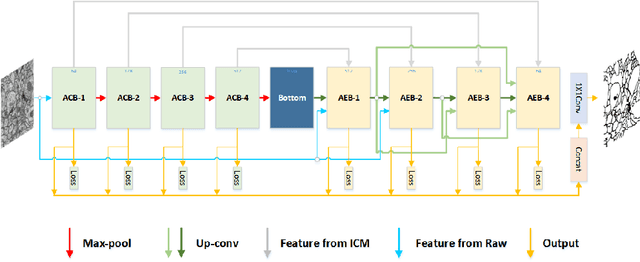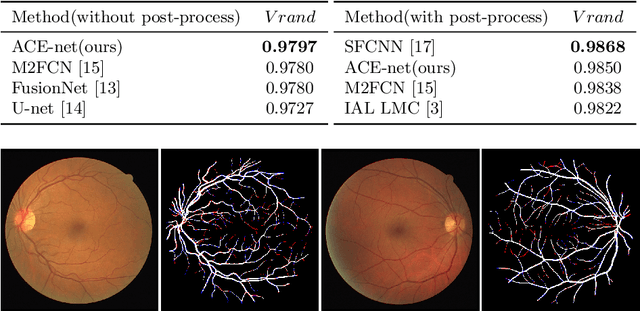ACE-Net: Biomedical Image Segmentation with Augmented Contracting and Expansive Paths
Paper and Code
Aug 23, 2019



Nowadays U-net-like FCNs predominate various biomedical image segmentation applications and attain promising performance, largely due to their elegant architectures, e.g., symmetric contracting and expansive paths as well as lateral skip-connections. It remains a research direction to devise novel architectures to further benefit the segmentation. In this paper, we develop an ACE-net that aims to enhance the feature representation and utilization by augmenting the contracting and expansive paths. In particular, we augment the paths by the recently proposed advanced techniques including ASPP, dense connection and deep supervision mechanisms, and novel connections such as directly connecting the raw image to the expansive side. With these augmentations, ACE-net can utilize features from multiple sources, scales and reception fields to segment while still maintains a relative simple architecture. Experiments on two typical biomedical segmentation tasks validate its effectiveness, where highly competitive results are obtained in both tasks while ACE-net still runs fast at inference.
 Add to Chrome
Add to Chrome Add to Firefox
Add to Firefox Add to Edge
Add to Edge